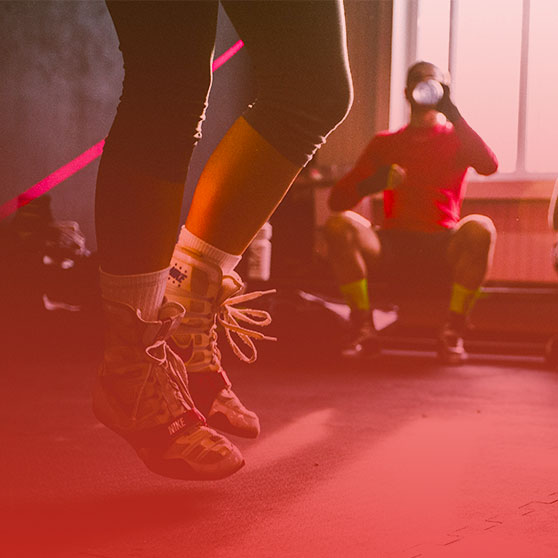High-Intensity Interval Training
High-Intensity Interval Training is a Health Solution
Physical activity or exercise is one of the major pillars of good health. Many people never get the chance or commit themselves to any form of exercise. Some people feel they never have the time or find exercising time-consuming. However, High-Intensity Interval Training can be a solution for such people. One of the most significant advantages of HIIT is that it guarantees most health benefits within a short period.
What is High-Intensity Interval Training?
High-Intensity Interval Training is a form of exercise that involves short periods of intense exercise alternating with less intense recovery periods until too exhausted to continue. HIIT is the most time-efficient form of physical activity. The workout range between 10-30 minutes. HIIT provides more health benefits than the average workout despite the short duration. The exercises involved in a HIIT workout may include walking, running, cycling, jumping rope, or other bodyweight exercises.
What are the Benefits of High-Intensity Interval Training?
Improving Cardiovascular and Metabolic Health
Due to their high intensity, HIIT workouts can improve heart conditions, whether in good health or those suffering from heart problems. It can also help enhance metabolic measures, including blood sugar levels, blood pressure, and cholesterol. A 10 week HIIT workout program produces the same cardiovascular and metabolic health benefits as a moderate-intensity workout.
Reducing Body Fat
Studies have shown that HIIT can help reduce body fat. HIIT produces a similar fat loss to traditional endurance exercises despite the smaller time commitment. HIIT using a hydraulic resistance system can burn more calories than moderate-intensity exercises. This implies that it can help people burn more calories within less time.
Improve Oxygen Consumption
Oxygen consumption is the capacity of your muscles to use oxygen. Oxygen consumption can be improved by endurance training. In moderate-intensity, training involves long sessions of continuous running or cycling at a steady rate. However, HIIT can produce similar benefits in a shorter period. HIIT is the best form of exercise for those people with busy schedules.
Muscle Gain
For some individuals, HIIT can help increase muscle gain. However, the muscle gain is in the legs and trunk that are used most frequently. Muscle gain is profound in less active individuals and has little to no muscle. Weight training is the standard form of exercise to increase muscle mass. HIIT could support a small amount of muscle growth.
Control Blood Sugar
Studies show that HIIT can help keep blood sugar levels under control. It also improves insulin resistance better than various traditional continuous workouts. Some studies have also demonstrated that HIIT can effectively improve blood sugar levels in people who have type 2 diabetes.
Keeping Blood Pressure and Heart Rate In Check
A lot of research suggests HIIT can help reduce blood pressure and heart rate in people who are obese and overweight. Performing high-intensity interval training on a stationary bike decreases blood pressure just like a traditional, continuous endurance workout. Some evidence even indicates that HIIT can give better results than common moderate-intensity workouts when it comes to reducing blood pressure.
Improve Aerobic and Anaerobic Performance
HIIT is proven to improve one’s performance both in aerobic and anaerobic activities. No matter if you are an athlete or just love running around with the kids, HIIT will help you perform these activities better only with a few short workout sessions a week.
HIIT Is More Than Just A Cardio Workout
Many people perceive HIIT as simply a cardio workout. Even though it is true that HIIT incorporates cardio-based sprints, whether you are running, on a rower, or on a bike, it is more than just a cardio workout. HIIT can be used in strength-based workouts as well. If your workout routines involve bodyweight exercises or you work with added weight, like medicine balls, kettlebells, or dumbbells, they will work your muscles and spike the heart rate simultaneously. The exercises that let you explode make a perfect fit for HIIT routines. These can include squats, push-ups, or kettlebell swings.
The Key To A Successful HIIT Workout
The intensity of a HIIT session is the key to making it a successful one. One must go hard to achieve the desired results in a short time. Working hard, however, does not mean that one should go at 100% intensity. Especially for beginners, going all out at once is not recommended. You should start with one to three-minute intervals while putting in 80% of your maximum effort, and follow it up with lower-intensity workouts for up to five minutes. It will be effective and safer as compared to 15 to 30-second intervals at almost 100% intensity right from the start. At times, the terms “interval training” and HIIT are used interchangeably, but true HIIT needs you to be intense and explosive during the work period. Nevertheless, it is not necessary to reach the maximum intensity right from the beginning.
How Often Should You Perform a HIIT Workout?
HIIT workouts tend to be way more exhaustive compared to steady-state endurance exercises. Therefore, they need a longer period for complete recovery. Ideally, you should begin with only one HIIT workout session a week and stick to steady-state workouts on other days. When you feel more prepared for the challenge, add another HIIT exercise to your workout week, ensuring that HIIT is spread throughout the week.
Is It Safe To Perform HIIT With An Existing Health Condition?
Staying fit and physically active is considered important for managing certain health conditions like high blood pressure, diabetes, heart disease, and high cholesterol. HIIT can also be a great choice for weight loss and maintaining overall good health. However, HIIT workouts are more challenging than other traditional exercises and can be demanding for the heart. Therefore, it is recommended that one should consult with their doctor and only start a HIIT routine if they prescribe so. Also, take a slow start and do only a few short intervals for some time. People with muscle or joint problems may not be able to perform HIIT workouts. They should only take their chances with such high-intensity workouts after consulting with their doctor first. Pregnant women who did HIIT workouts before pregnancy and didn’t have any existing medical issues can safely continue HIIT during the first trimester after talking to their doctor. During the second and third trimesters, the growing belly restricts much of the normal activity, and one should only continue with high-intensity training with their doctor's approval. It is also important to drink lots of water and not get overheated.
Some Common Mistakes People Make When Doing HIIT
While HIIT can deliver great results in a short period, it is important to do it right to achieve the desired goals. Avoid some of these common mistakes to keep your workouts safe and get in shape faster.
Going All Out On The Moves
One mistake many beginners make with HIIT is going all out on the moves without having their form down. To avoid any risks, bodyweight movements are probably the best choice. When you train with added weight, it is important to follow the right technique. When you go all out with your form off, you end up putting a lot of strain on some joints and muscles, leading to injury. Therefore, one should train with proper form and keep the tempo easier before doing it at a high intensity.
Not Warming Up Properly Before The Training Session
Warming up properly before your HIIT intervals is crucial, whether you plan to do strength or cardio-based HIIT. A proper warm-up includes mobility moves, such as thoracic spine rotations and hip-opening stretches, and slower-tempo repetitions of the actual workout you’ll be doing for HIIT, like squats. Warming up before the workout also preps your nervous system. If the body is not prepared to take it, you risk an injury or poor performance during the HIIT session.
Working Out In Long Sessions
HIIT is all about training in short bursts of high intensity. You make a mistake when you schedule long HIIT sessions. When you go all-out, it won’t be possible for you to sustain for a long, 45-minute session. True HIIT training is something like doing 8 high-intensity 20-second sprints parted by one-minute intervals of rest in between. That makes the HIIT protocol (without the warm-up and cool-down) a little over 10 minutes.
Overall, HIIT gives you the same results as an average workout would give you in a shorter period. One of the best things about HIIT is that you don't require any weights or special equipment, and you can do it anywhere, be it at home, in a park, or even in your office. It's a highly efficient way to burn calories. If you lack time and want to stay active, High-Intensity Interval Training is for you.












